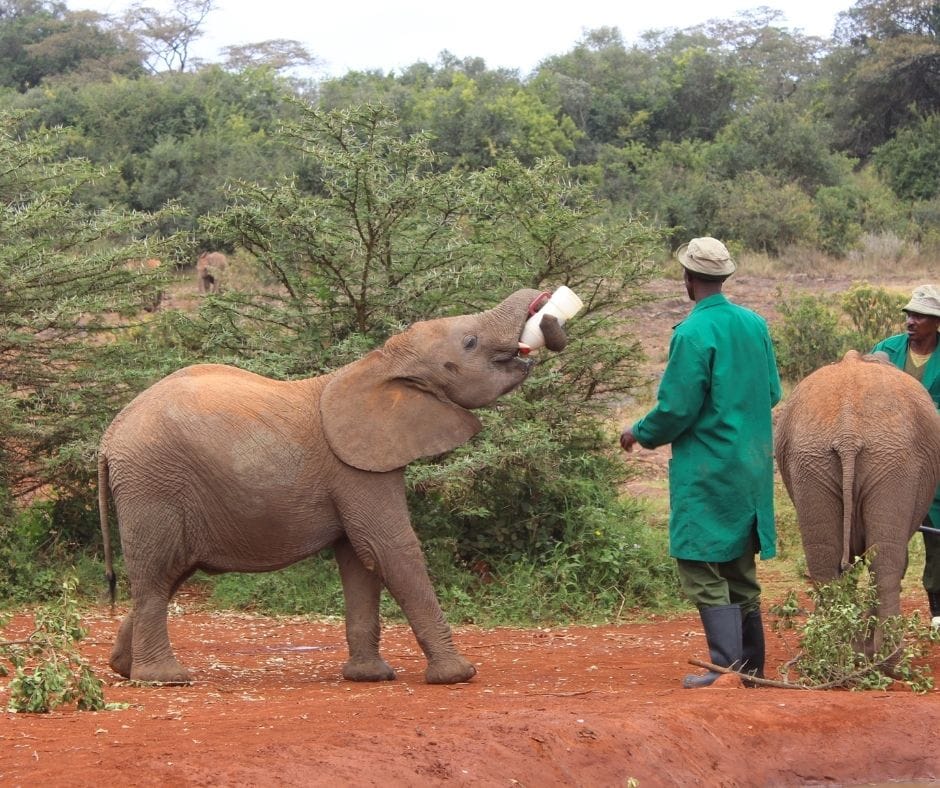What is Animal Tourism?
Ethical Animal Tourism / March 10, 2025 / 5 comments
Animal tourism is a controversial and often misunderstood topic. As sustainable travel becomes more popular (and more important), part of that is being aware of animal tourism. While there are many benefits to wildlife tourism, it crucial that we as travelers learn the difference between ethical and cruel animal encounters.
I love animals and have since I was a kid, so traveling and seeing animals usually go hand in hand with me. I was the kid at the circus who was NOT having a good time because I knew the elephants and tigers shouldn’t be in cages or behaving like that. However, riding elephants, tiger selfies, and just picking up wild animals for photos are also as popular. The only hopeful reason for this behavior is that people are misinformed about ethical animal interactions (I know I have been). Don’t worry, there is still plenty of ethical animal encounters around the world that you CAN do.
If you like this post, be sure to sign up for my e-mail list for travel inspiration & tips, or connect with me on Facebook, Instagram, Twitter, BlueSky, Threads, or Pinterest. I also have a Facebook group where you can ask me anything travel related – and I share travel deals!

Animal Tourism By The Numbers
A 2018 Report by the World Wildlife Federation shows that the TOTAL animal population has declined by 60% since 1970. That’s crazy! There are 60% fewer mammals, birds, fish, reptiles, and amphibians in the world in only 50 years. Deforestation is a huge contributor to this decline.
Sanctuaries and conservation parks have been formed to help with the decline. However, as the animal population declines, their popularity as tourist attractions increases. It’s a guarantee to see a tiger at a tiger temple than it is to go on a tiger safari (and probably a lot cheaper). The other problem is that many of these conservation places are non-profit and need to raise funds for the work they do. This is why it’s not always as easy as one would think to identify the difference between unethical animal tourism and responsible tourism.
Not so fun fact: Around 110 MILLION people visit wildlife tourist attractions around the globe each year. (World Animal Protection)

History of Animal Tourism
Animal tourism dates back to Ancient Rome (at least) Capturing and transporting live animals from far away was a way to display wealth and power. Many of them were killed in live hunting shows for amusement. In the Colosseum, there were often animal fights with tigers, lions, and elephants. It’s estimated that over 15,000 animals were killed in the Colosseum.
During this time, Romans discovered that elephants could do tricks. These elephants were often shackled and “trained” in between the animal fights for shows – what would later be termed as a Circus.
The fascination with exotic animals continued to the 20th century, with a focus on African safari animals. “Big game” including hunting the Big 5 animals. Even U.S. President Theodore Roosevelt traveled to Africa to hunt game. The animals collected were for the National Museum (now the Smithsonian’s Museum of Natural History!)
In the next few decades, zoos and aquariums became more popular. According to The Rose-Tinted Menagerie by William Johnson, dolphins showed their potential as entertainers when one was pushing a pelican feather across the water. When the staff threw the feather, the dolphin brought it back. Captive dolphins quickly became entertainers. Over time, this exploitation included other species (such as orcas!)
Illegal trafficking of exotic species is still quite common today. People who have tigers as pets are seen as wealthy and have animal entertainment (Tiger King, anyone?).

What are forms of Animal Tourism?
There are a number of types of animal tourism – zoos, aquariums, sanctuaries, orphanages, interactions with wild animals, circuses, shows, sales of exotic animals, photos with exotic animals (such as selfies with tigers), and trophy hunting. Any type of tourism that focuses on human interactions generally is considered a form of unethical animal tourism.
Other forms of wildlife tourism can include going on safari to see your favorite animal – such as the African Elephant or Tigers in India. Visiting or volunteering at an Animal Rescue Center to help with animal cruelty is an example of ethical animal tourism.
So is all Animal Tourism bad?
No. Animal tourism has good and bad to it, and it’s important to get educated and only partake in good animal tourism. Animal tourist places that take animals from their natural habitats for entertainment or unethical animal encounters should be avoided at all costs. However, visiting an elephant orphanage, like the Sheldrick Wildlife Trust in Kenya, that does not partake in elephant rides and releases the healed elephants back to the wild when able to, is acceptable. This type of elephant sanctuary has a positive impact on its community and animals.
There is a lot of controversy and debate about whether or not this type of tourism can have a truly positive effect.
On one hand, animal tourism helps with donor support, increased awareness leading to increased protection and political will. The community is benefited through employment, infrastructure, and being on the global radar. However, knowing where exotic animals live, there’s an increased risk for hunters and poachers to find them, increased road-building, damaging the native habitat, not to mention the animals may change their behaviors when they are comfortable around humans.


What is an ethical wildlife encounter?
I’ll be diving more into this in future posts, but did want to cover it here. Volunteering in National Parks to help protect nature, or with an animal rescue and rehabilitation program can be ethical animal interactions. Visiting a sanctuary can help fund programs to protect animals. Going on a safari to see your favorite animal (like an African elephant or a tiger in India) is considered ethical – but only if there is no human interaction. Some safaris feed the animals to bring them closer to tourists. The animals then associate humans with food which is not good for anyone. Animal-friendly tourism makes the animals the priority NOT the tourists.
Be sure to use common sense and do your research. If there are captive animals – why are they captive? What is the impact on wildlife? How did the animals get there? Is there direct contact with the animal? What is the reason for the interaction?
These are all important questions to ask before engaging in potentially unethical animal tourism!


Save “What is Animal Tourism?” for later!
Feel free to ask any questions in the comments!
About the Author


5 responses to “What is Animal Tourism?”

Great article. I volunteered at an animal rescue in Isla Holbox on my vacation. It was a great way to meet the kittens needing adoption and help the underfinanced shelter.

That’s an awesome way to spend some time on vacation!

Love the awareness and reminders. Thank you for posting.

Great article! Breaking the idea that animals are here for our entertainment is so important, thanks for your insight. Looking forward to reading more.

Great article, thank you for sharing. I am a diver, so I am an animal tourist a lot. It’s really important to promote responsible tourism including benefits for animals! This includes destinations, hotels and restaurants that promote kindness to animals, waste reduction and protecting animals habitat. Thank you so much for sharing.












Leave a Reply